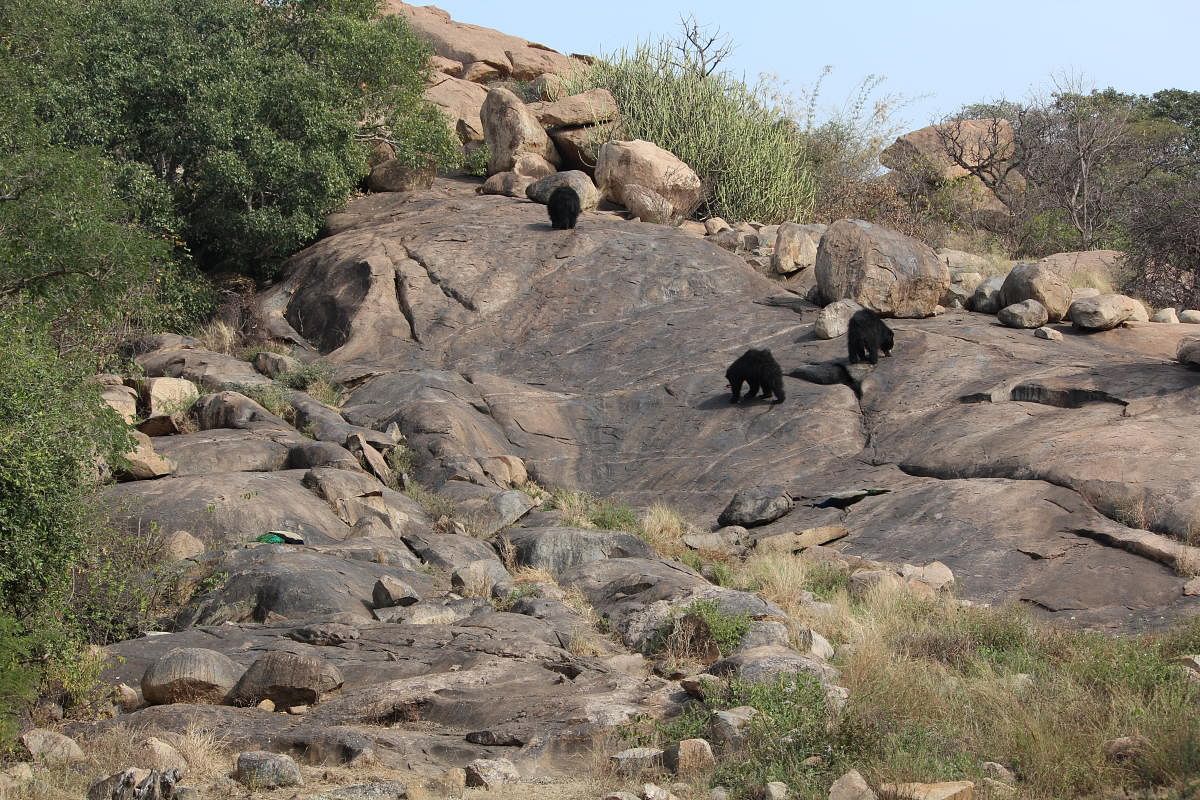
A stone’s throw away from Hampi, the Daroji Bear Sanctuary is Asia’s first sloth bear sanctuary. The Indian Sloth Bear is listed as ‘vulnerable’ on the International Union for Conservation of Nature’s Red List. It is worth noting that the sanctuary spread over 83 square kilometres covers habitats threatened by excessive mining activity.
Interestingly, the area coincides with the mythological kingdom of Kishkinda mentioned in the Ramayana where Rama and Lakshmana meet the anthropomorphic bear Jambavantha. Baloo from Rudyard Kipling’s Jungle Book is another famous anthropomorphic Indian sloth bear. When I came across the Daroji Bear Sanctuary on the Karnataka Tourism webpage, I did not want to miss the chance to have a date with the beloved Baloo.
Fortunately, the tourism department had put up enough signs giving directions from Kamalapura onwards and we were at the sanctuary in 30 minutes. The forest guard was excited to see us, as we were the first visitors of the day! From the entrance, it is compulsory to hire a jeep to head into the sanctuary. Visitors are only allowed access until a watchtower about 5 km away. The drive is through a dry, scrubby forest with massive granite rock formations in the background. One can spot many birds such as the Indian green bee-eater, grouse, spotted dove, and peacocks. Our guide was eager to point them out and wait while we clicked pictures.
The watchtower overlooks a hillock called ‘Karadikallu Gudda’, from where you can watch, with binoculars, the sloth bears that come out to eat the sweet treats that the forest guards lay out for them on the slopes. If you are carrying a camera, you can pay an extra fee to be taken closer to the hillock. There is an enclosure a few hundred metres away, and you can get into it to see the sloth bears enjoying their afternoon treats.
A visual delight
It turned out that we were just in time for the bears to make an appearance! It was almost like watching a performance on a stage. A couple of bears wandered onto the slopes to lick the jaggery solution poured there. A few peacocks and a trio of mongooses made an appearance too. In the foreground, different birds flitted in and out, adding to the drama.
All visits are timed, and hence, our guide gestured to us to leave the enclosure quietly and head back to the jeep. We were there for almost half an hour and saw at least five different Indian sloth bears, among which two seemed to be bullies chasing the other ones away. It was a delight to watch the many birds as well.
There was a treat in store for us on the way back, the three bears chased away by the two bullies were frolicking by the pathway and we got to see them from just a few metres away. The sound of the jeep scared them behind the bushes, but as soon as the jeep was turned off, they came out.
I have been on several safaris including those in Bandipur and Sariska, however the one at Daroji has been the most fulfilling. Maybe it is the lack of tourists, the eagerness of the guide or the luck with spotting so many animals and birds without having to wait and search for long. It is a pity that despite the heavy footfall in Hampi, very few tourists make their way to Daroji Bear Sanctuary. For those who grew up reading or watching the Jungle Book, it is definitely worth seeing the bears that Kipling used as reference in their natural habitat.
There is barely any consistent information available about the sanctuary online. Sadly, even the locals did not know much about it. The guide informed us that the ticket office to the sanctuary is located near the Atal Bihari Vajpayee Zoological Park in Kamalapura. Safaris start from there at 1:30 pm and 3:30 pm every day. The sanctuary has a jeep for those visiting. You can save yourself the 30 km drive if you take the safari from Kamalapura. Usually, the safari jeep seats seven members and costs Rs 350 per person.